|
|
Toccatas BWV 910-916
Richard Troeger, Peter Watchorn (Harpsichord)
Bach's Toccatas for Harpsichord from Watchorn & Troeger
Recordings
|
1 |
J.S. Bach: Seven Toccatas (Bach on Clavichord Vol. 2) [K-2] |
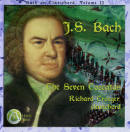
|
|
Toccatas BWV 910-916 [10:54, 10:26, 11:34, 12:38, 7:00, 9:05, 7:53] |
|
Richard Troeger (Clavichord) |
|
Lyrichord |
2000 |
CD / TT: 69:30 |
|
Buy this album at: Amazon.com |
|
2 |
Edition Bachakademie Vol. 104: Toccatas BWV 910-916 [K-2] |
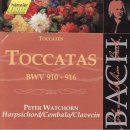
|
|
Toccatas BWV 910-916
[12:32, 12:25, 11:44, 14:08, 7:33, 10:31, 9:12] |
|
Peter Watchorn
(Harpsichord) |
|
Hänssler 92104 |
Aug 12-15, 1999 |
CD / TT: 78:27 |
|
Recorded at The Studio, Roslindale, Massachusetts, USA.
Included in Box Sets [B-1], [B-2].
Review: Bach's Toccatas for
Harpsichord from Watchorn & Troeger (3 Parts)
Buy this album at:
CD: Amazon.com
| Amazon.co.uk
| Amazon.de
CD: Amazon.co.uk
| Amazon.de
Music Download: Amazon.co.uk
| Amazon.de
16-CD: Amazon.com
| Amazon.co.uk
| Amazon.de
16-CD: Amazon.co.uk
| Amazon.de
|
|
3 |
Ba: Toccatas BWV 910-916 [K-8] |
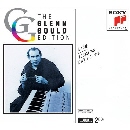 |
|
Toccatas BWV 910-916 [11:43, 11:13, 14:01, 17:08, 8:35, 8:44, 8:52] |
|
Glenn Gould (Piano) |
|
Sony |
Apr 1963; Oct- Nov 1976; May-Jun 1979 |
2-CD / TT: 80:57 |
|
Recorded at 30th Street Studio, New York City, NY, USA (BWV 914) & Eaton's Auditorium, Toronto, Canada (rest).
Buy this album at: Amazon.com | Amazon.com | Amazon.com [Part 2] | Amazon.com [Part 1] | Amazon.com |
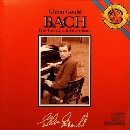
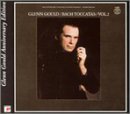
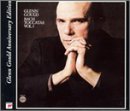
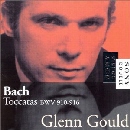 |
|
4 |
Bach: The Seven Toccatas for Harpsichord [K-1] |
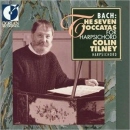
|
|
Toccatas BWV 910-916 [12:20, 11:22, 11:43, 13:32, 8:11, 10:15, 8:23] |
|
Colin Tilney (Harpsichord) |
|
Dorian |
May 1988 |
CD / TT: 76:01 |
|
Recorded at Troy Savings Bank Music Hall, Troy, NY, USA.
Buy this album at: Amazon.com |
|
Part 1 |
|
Donald Satz wrote (March 21, 2001):
The Toccata had a long history before Bach's time and took various forms. However, in Bach's era it was customary for the Toccata to be in paired preludes & fugues. Being relatively early Bach works, his seven Toccatas for Harpsichord don't receive the degree of praise given many of Bach's other keyboard compositions. They also don't get recorded very often as a set; usually one or two show up on a Bach recital disc.
Hänssler recently issued a disc of Peter Watchorn performing the seven Toccatas on harpsichord. I am familiar with Mr. Watchorn through his English Suites set on Titanic, a set which I found to be worthy but not excellent. Titanic had announced that set as Volume I of Bach's complete keyboard works, but volume I was as far as the series went. This new Hänssler recording did get a fine review in one of the American review periodicals. Richard Troeger is progressing on his own cycle of Bach keyboard works for Lyrichord, but with a difference. Troeger's instrument of choice is the clavichord, and reviews of the discs issued to date have been highly complimentary of the clavichord and Troeger's performances. For comparison, I'm using the Gould set, Colin Tilney on harpsichord, and three of the Toccatas from Pierre Hantai on harpsichord.
The specifics on these recordings are:
[1] Richard Troeger - Lyrichord 8041 - Complete.
[2] Peter Watchorn - Hänssler 92104 - Complete.
[3] Glenn Gould - Sony 42269 - Complete.
[4] Colin Tilney - Dorian 90115 - Complete.
[5] Pierre Hantaï - Virgin 45284 - BWV 913-15 & Other Bach Pieces.
Toccata in F sharp minor, BWV 910 - This Toccata is essentially in a prelude-fugue-prelude-fugue sequence. The opening prelude consists of a Presto section and an Adagio. The Presto is fantasia-like and exciting with a bridge leading to the Adagio which is strongly devotional and seems to constantly be reaching out for guidance. Of the four versions, only Gould is not very effective in the Presto, being too smooth and not sufficiently angular. Turn to Tilney or Troeger and the Presto is very exciting; Watchorn does well but his sound is somewhat diffuse and not as sharp as I would like.
The first Adagio is wonderful music that exudes an intense level of devotion/prayer at every turn. Gould makes up for any lacking in his Presto with a very slow reading of mystical proportion that I find revelatory. Troeger, although perhaps not magical, gets to the core of the Adagio with an exceptionally intense performance. Watchorn again does well but falls short of being superb. Tilney is relatively weak; the imploring element, quite low, results in a relatively ineffective interpretation that doesn't reach out and touch me.
A bridge passage leads into the first fugue which is a Presto in 4/4 time. The subject is based on a descending scale, and the countersubject has a prevalence of sixteenth notes; botsubject and countersubject are inverted. The music is intense and highly demonstrative, easily bordering on anger. There's also a few macabre passages which add to the intensity. Most of all this is lost on Colin Tilney who stays at arms-length throughout his performance. I expected that Gould would be a perfect match for the music, but there is a somewhat flat emotional response. Personally, I think the recorded sound has much to do with it, but I can't separate Gould from the sound he receives. Troeger and Watchorn hit the right buttons, bringing out the fugue's excitement, strength, and macabre elements.
The second Adagio can seem like endless repetition of a line, or the performer can bring out the music's harmonic expressiveness. Basically, this Adagio has the ability to mesmerize the listener from the start. That's exactly what Watchorn's reading does to me; he's inevitable and highly expressive. Gould is close to this level with a "thinking person's" interpretation. Neither Tilney nor Troeger have impact on me until close to the conclusion; with both versions, I found myself counting the number of times the subject is repeated. That's not a good sign unless you want to bone up on simple addition.
The Toccata in F sharp minor concludes with a remarkable fugue based on a descending chromatic figure also used in the Crucifixus from the B minor Mass (BWV 232). While this chromatic figure in the first Adagio is mystical and serene in Gould's performance, it is macabre, mesmerizing, and exciting in Watchorn's reading of the fugue; Watchorn is revelatory. Gould is fast, exciting, and expressive. Troeger never gets to the music's core, and Tilney is quite slow and ordinary.
Summary for Toccata in F sharp minor: Gould, Troeger, and Watchorn have much to offer. I wouldn't want to be without Gould's magical first Adagio, Troeger's first prelude/fugue series, or Watchorn's second series. Ultimately, my first choice has to be Watchorn who is never less than stimulating and provides great continuity in the second prelude & fugue. Except for the opening fantasia, Tilney's reading is superfluous. |
| |
|
Part 2 |
|
Donald Satz wrote (April 30, 2001):
The Toccata in C minor BWV 911 has a prelude consisting of an opening toccata and fantasia-like Adagio; the following fugue is a massive one in two sections with the second section a double fugue of the same tempo with the countersubject having sixteenth notes which gives the illusion of greater speed. Troeger, Watchorn, and Tilney provide fine performances, but it is the Gould that I find most interesting on positive and negative grounds. On the positive side, Gould continues to deliver superb adagios; this one is prayer-like, quite dramatic, and much more rewarding than the other three versions. Gould's double fugue is another matter. He sectionalizes it so thoroughly that any sense of continuity is destroyed. Yet, I still enjoy his playing within the little sections he creates and consider his C minor Toccata the best of the four.
Toccata in D major BWV 912 - The D major might well be the most well known of the seven Toccatas; it was the only one recorded by Wanda Landowska who had great impact on Bach keyboard programming in the early part of the 1900's. Interesting features of the D major include two fugues, one an Adagio in F sharp minor and the other a gigue-like fugue. Also, prior to the F sharp minor fugue, there is a very long fantasia-like movement in three sections - presto, allegro, and adagio. With the exception of the Adagio in F sharp minor and the following Presto which leads to the second fugue, the mood of the D major Toccata is very playful and exudes a youthful exuberance.
I haven't been thrilled with the sound of Tilney's harpsichord; it's rather tinny and lacks depth. I usually pay no attention to the harpsichord used, but this time I notice that Tilney plays an anonymous Italian harpsichord built in the 1700's. It's a problem which a great artist can easily overcome, but I'm not too confident that Tilney is in that category. Anyways, Tilney handles the more serious sections of the D major excellently with fine flow and purpose. The exuberant and youthful sections are a different matter. Tilney just doesn't seem to want to really bust out and dip into his youth. His harpsichord is no help as it decays too quickly.
Watchorn is wonderful throughout the D major. He finds the eternal fountain of youthful energy and milks it completely, providing infectious performances with an eerie atmosphere to boot. Watchorn is also superb in the Adagio in F minor as he weaves a poignant spell over this listener. Troeger is certainly an improvement over Tilney but can't match Watchorn for youthful energy or excitement. Also, he begins the Toccata in a rushed manner. Gould is as youthful as Watchorn but less exciting. I should caution that some of Gould's youthful displays might seem to some listeners to be much too 'cute' and inappropriate. Overall, it's Watchorn, then Gould, Troeger, and Tilney.
Toccata in D minor BWV 913 - An introductory toccata, two adagios, and two fugues make up the D minor. The first adagio & fugue are in my opinion the superior segments of the work. This adagio is excellently played by Hantai and Gould. Hantai is on the slow side, and Gould is much slower than Hantai. As has been customary for Gould, he is superb in the adagio with a mesmerizing reading of depth. Tilney's first fugue is outstanding with great urgency lacking in the other versions. There's nothing unfavorable about the Watchorn and Troeger performances; they just don't rise to the top.
Update: With three Toccatas remaining, I have enjoyed the Gould and Watchorn performances more than the Tilney or Troeger issues. Wathcorn's D major is superb, and Gould continues to come up with some magical Adagios. I'm starting to think that Troeger's use of the clavichord for these works is problematic. Bach's Toccatas are not among his more intimate or delicate compositions; they are somewhat brash and definitely exuberant and youthful. Regardless, I am finding Troeger's Toccatas recordings less rewarding than his set of the Partitas for Harpsichord. |
| |
|
Part 3 |
|
Donald Satz wrote (June 11, 2001):
Toccata in E minor, BWV 914 - The E minor begins with a short introductory presto to a four-voice double fugue. Both the Presto and Fugue are permeated by urgency; the double fugue is particularly memorable music of great beauty. Each of the versions is excellent: Troeger displays the greatest urgency, Watchorn and Hantai are fast and impatient, and Tilney conveys an irresistable subtlety of expression. Gould surpasses these four versions with a slow and stately double fugue. The urgency is still there, but a strong sense of calming assurance and even heroism hangs in the air. Gould's is a majestic reading.
The second prelude is a restless Adagio in the form of a Fantasia; a fast and invigorating three part Fugue closes out the Toccata. Tilney is superb; both his Adagio and Fugue have just the right weight and stature. His phrasing and detail are real treats. Watchorn is also exceptional in the Adagio, but his Fugue does not possess the stature of Tilney's. There are times in the Adagio when Hantai sounds as if he's on speed and this perception continues into the Fugue; I find it damages continuity. Gould does well, but I feel he trivializes the Fugue in that he seems to toy with it. There are no complaints about Troeger's performance; an incisive Adagio and exciting Fugue are very rewarding.
Overall, I favor the Gould and Tilney Toccatas in E minor. Gould's double fugue is transcendent, and Tilney is excellent throughout. Watchorn and Troeger do very well, but Hantai's speed-ups in the Adagio and the Fugue are not to my liking.
Toccata in G minor, BWV 915 - The first prelude/fugue series begins with a short and improvisatory Presto leading into an ornamented Adagio. The Fugue is an exuberant and youthful Allegro in B flat major which presents two subjects simultaneously and then inverts the countersubject. Although youthful in outlook, the Fugue is also ceremonial and majestic.
'Maje' well describes the Troeger performance of the B flat major Fugue; he seems to have this music in his blood. Watchorn is quite youthful, but his level of ceremony is substantially lower than Troeger's. Hantai is wonderfully sharp and incisive in the prelude; his Fugue is highly staccato, detailed, and crisp with a delicious blend of youth and ceremony. Tilney does not possess the incisiveness of Hantai nor the ceremony of Troeger. Gould's Presto/Adagio lacks some bite, and his Fugue doesn't sound very youthful, detailed, or ceremonial.
The second prelude/fugue series of BWV 915 starts with an improvisatory Adagio leading to a gigue-like four voice fugue with dotted rhythm subject and flowing countersubject in triplets; the fugue ends with a short improvisatory presto. There is some speculation concerning the gigue's authorship, but I'm firmly in the 'Bach wrote it' camp. It has all the earmarkings of Bach maximizing diversity within a narrow frame and well reflects Bach's use of economy.
Watchorn and Hantai are terrific in the second series; their Adagio and Presto are incisive, and the Fugue is exciting, eventful in that it well brings out the variety in the music, and displays some macabre elements. Gould is fast but nothing more, Troeger's instrument might not be a good choice for the strong drive of the Fugue, and Tilney uses a slowish tempo which reduces excitement.
Hantai bows out at this point. His performances of BWV 913-915 are very good and display much sharpness, clarity, and incisiveness. Hantai's Virgin disc can be strongly recommended; it also includes four infrequently recorded pieces which are performed excellently.
Toccata in G major, BWV 916 - The G major is essentially in the Italian concerto form. The first movement, Presto-Allegro, alternates tutti passages having a repeated downward scale with solo passages of broken chords. The music is loaded with youthful energy, and Watchorn and Tilney best convey the accumulation and release of that energy. Their readings are magnificently fluid while retaining a fine sense of angularity. Gould and Troeger are excellent versions; Gould is very fast and some might consider his interpretations rather eccentric and willful.
The Adagio in E minor is very tender and comforting. Troeger does not project much tenderness, Watchorn is little matter-of-fact, and Gould is very slow and can't quite work his magic on this Adagio. Tilney is wonderfully expressive and ornamented - by far the best version.
The final movement fugue features much stretto and also descending scales which take us back to the first movement. Gould and particularly Tilney are excellent. With Tilney, the music has a constant urgency and anticipation that keeps hitting the envelope without breaking it. Overall, the G major belongs to Tilney and is the highlight of his set of the Toccatas.
Recommendations: I much prefer Peter Watchorn's performances to those by Troeger. Much of that preference has to do with Troeger's choice of instrument; I just don't feel that the clavichord matches up well with the youthful exuberance of the Toccatas. Watchorn does well throughout with fluid approaches having angularity when needed; his strength is in delightfully bringing to center stage the energy and exuberance of the music.
I wouldn't want to be without Gould's Adagios which I must admit are more enjoyable than his fast movements; also, the improvisatory movements are sometimes rather flat. Tilney is also preferred to Troeger largely based on his fantastic G major performance; I should caution that I find the sound of his harpsichord on the thin side. So, my order of preference is Watchorn, Gould, Tilney, and Troeger. |
| |
|
Feedback to the Review |
|
Teri Noel Towe wrote (April 4, 2001):
Gouldís BWV 910
Donald Satz wrote:
< Toccata in F sharp minor, BWV 910 - This Toccata is essentially in a prelude-fugue-prelude-fugue sequence. The opening prelude consists of a Presto section and an Adagio. The Presto is fantasia-like and exciting with a bridge leading to the Adagio which is strongly devotional and seems to constantly be reaching out for guidance. Of the four versions, only Gould is not very effective in the Presto, being too smooth and not sufficiently angular. Turn to Tilney or Troeger and the Presto is very exciting; Watchorn does well but his sound is somewhat diffuse and not as sharp as I would like. >
Please remember that Gould makes a cut in the F Sharp Minor Toccata. |
| |
|
|
|